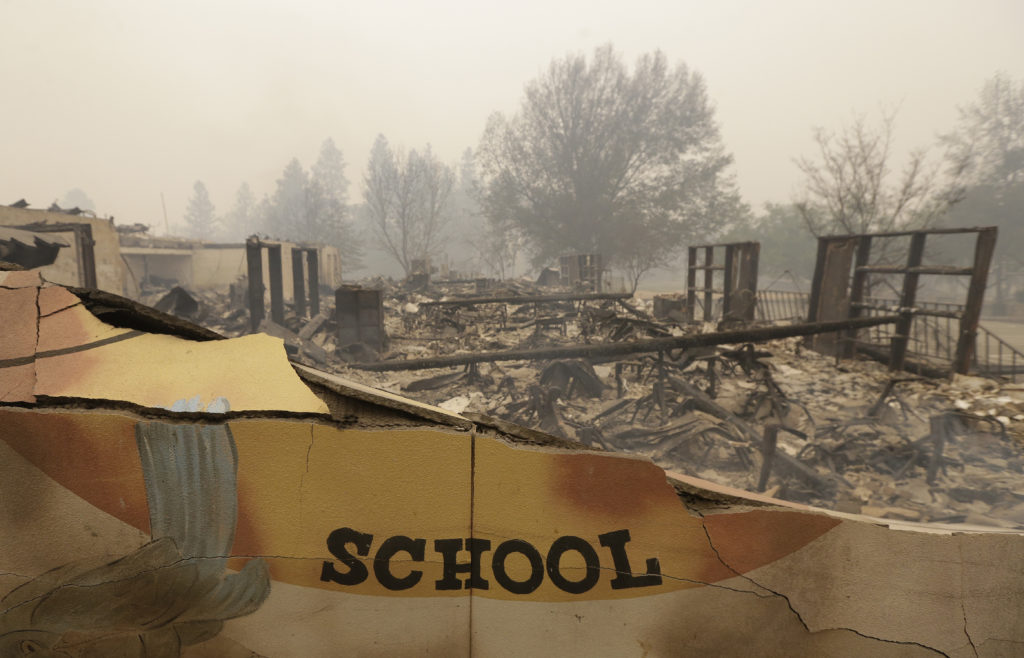Oliver Darcy is a media insider who left CNN to write his own blog, Status. There he posts the scoop on what is happening behind the headlines.
Darcy writes that the latest discouraging developments at The Washington Post. Once a force for courageous and independent journalism, its owner Jeff Bezos is transforming it, and not in a good way. The exodus of its best journalists, editorial writers, and opinion writers has been sad.
It’s getting worse.
The Post’s slogan is: “Democracy dies in darkness.” The lights are going out in the newsroom.
Darcy reports:
Last month, as The Washington Post weathered an exodus of staffers opting for buyouts, Karen Attiah logged on to X with an observation: “So… officially, I’m the last Black staff columnist left in the Washington Post’s opinion section,” the award-winning journalist wrote. (Technically, Keith Richburg and Theodore Johnson remain as contributing columnists.) At the time, Attiah was still deciding whether to accept The Post’s voluntary exit package or remain at the embattled Jeff Bezos–owned newspaper.
Soon after, I’m told that Attiah sat down with Adam O’Neal, The Post’s newly installed opinion editor. As Status previously reported, O’Neal had been holding similar one-on-one meetings with columnists, delivering what sounded to many like a human resources–approved talking point: their work didn’t align with his vision for the section and they should consider taking the buyout.
O’Neal likely assumed Attiah would follow the path of most colleagues who heard the same pitch and head for the door. Attiah, for her part, may have been hoping for the opposite, that he’d affirm her value and express a desire to keep her. In any case, neither scenario materialized. The meeting, I’m told, was tense and went poorly, to put it mildly.
Ultimately, Attiah declined the buyout. Just last week, she published a column on how she gained 20 pounds of muscle, framing bodybuilding as a “deeply feminine act of self-consciousness.” Still, her future at The Post looks uncertain. As O’Neal indicated during their meeting, her work seems at odds with its emerging editorial direction, and it’s hard to imagine she’s long for his world.
Indeed, while O’Neal’s vision for the newspaper’s opinion arm has been remarkably opaque, this week delivered a few clues about the direction he seeks to take it. On Tuesday, O’Neal published two pieces from Trump administration officials. The first, by National Institutes of Health director Jay Bhattacharya, argued that the Health and Human Services decision to “wind down its mRNA vaccine development activities” was a “necessary” move—a stance that I’m told triggered reader blowback.
The second was more eyebrow-raising. Amid alarm over Donald Trump’s seizure of Washington, D.C.’s police force, O’Neal published an op-edfrom former Fox News host–turned–district attorney Jeanine Pirro, touting “the fight to make D.C. safe and beautiful.” The piece effectively justified Trump’s militarization of the capital and painted the city as a crime-infested area. While not quite as incendiary as Tom Cotton’s infamous New York Times op-ed calling to “send in the troops,” its timing and framing were jarring for a paper that still claims “Democracy Dies in Darkness.”
The Post’s own editorial board followed up with a curious piece that largely took Trump’s stated intentions at face value. It noted that crime in the city can’t be solved “from the Oval Office or by swarming the city’s streets with Humvees,” but offered no real condemnation of Trump’s power grab. Instead, it effectively argued that Trump’s action would not work as a permanent solution because it “will be temporary” and “long-term solutions will be needed.” Further, the piece framed Trump as merely delivering on a “law-and-order message” to voters—again, a tone in line with the posture O’Neal appears to favor.
“They are turning The Post into a mouthpiece for the Trump administration,” one former opinion editor commented to me Wednesday evening, adding that such editorials would not have been published under previous section chiefs.
Beyond the editorials, O’Neal’s internal standing is murky, according to people familiar with the matter. He’s pushed out much of the previous leadership and a number of marquee columnists, but the people familiar have told me that many of those remaining still view him with skepticism. The sentiment is unsurprising, given that during his brief stint at The Dispatch, his abrasive leadership style prompted staffers at the conservative magazine to complain within weeks of his appointment to management. In fact, I’ve since learned that he was instructed at The Dispatch to undergo leadership training to address concerns about his management style.
Of course, Bezos is unlikely to care how the existing staff responds to O’Neal, just as he hasn’t seemed bothered by how much disdain there is for publisher Will Lewis within the newspaper’s K Street halls. For now, staffers like Attiah now face a stark choice: adapt to O’Neal’s vision or risk their future in the opinion section. Either way, The Post’s opinion pages are headed for certain transformation.
What a betrayal of the legacy of the Graham family, especially Kathryn Graham, who considered the Post a sacred trust and believed that Bezos would be a responsible steward of its integrity.


